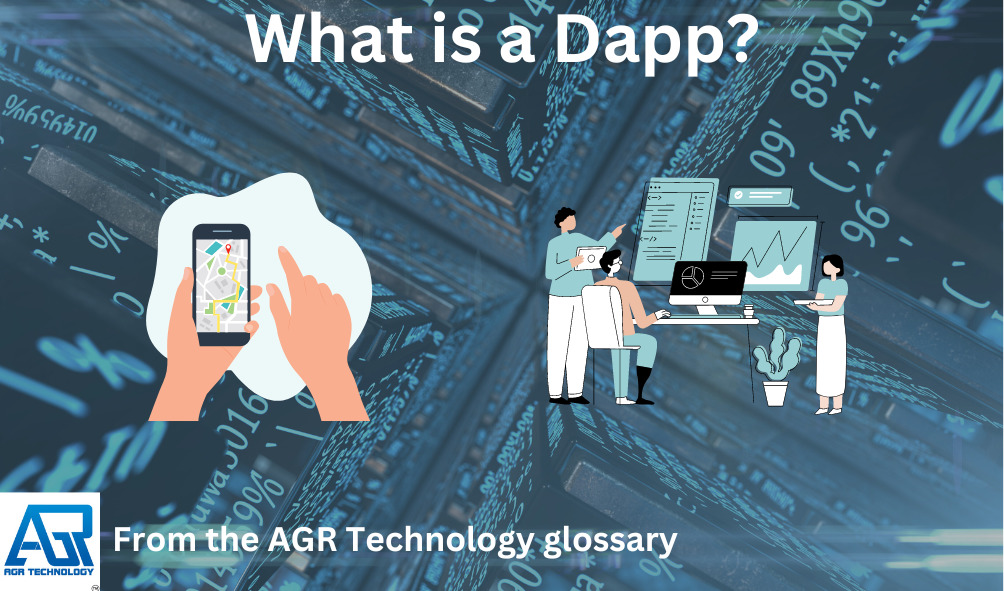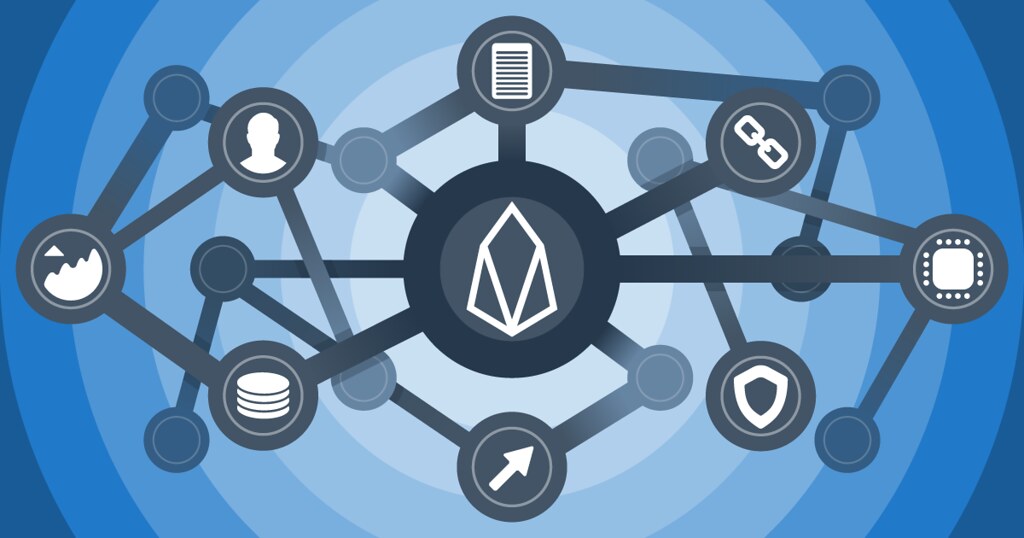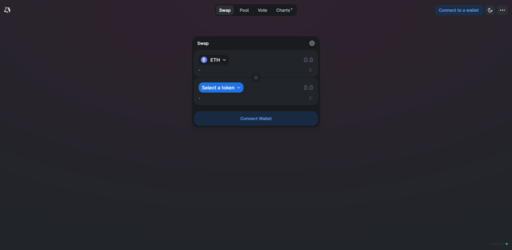Introduction

A decentralized application (DApp) is a type of software application that may run independently, generally using smart contracts, on a decentralized computer, blockchain, or other distributed ledger system. DApps offer some kind of function or benefit to their customers, but they are not owned by any single business.
DApps have been popularised by distributed ledger technologies (DLT) such as the Ethereum or Cardano blockchains, leading to significant advancements in the use of these functionalities within the decentralized finance (DeFi) area.
DApps are classified into a variety of areas, including exchanges, games, finance, gambling, development, storage, high-risk, wallet, governance, property, identity, media, social, security, energy, insurance, and health.
DApps are applications that function autonomously, with no centralized entity controlling the bulk of the tokens linked with the application. They also have a public, decentralized blockchain for keeping a cryptographic record of data. These applications are sometimes referred to as “web3 applications” due to them been a part of the wider Blockchain ecosystem commonly called Web 3.0 as the next phase of the internet.
Related articles from our blog:
Best place to buy Cryptocurrencies in Australia
Best Crypto Exchanges for New Zealanders
Some of the Best Exchanges To Buy Bitcoin in Norway
List of the Best Cryptocurrency Exchanges across the UAE & Dubai
Best Cryptocurrencies and coins to buy now (Interactive updated tool)
List of some top Crypto trading applications for the Taiwan region
Curated list of platforms to help you pick the best Crypto exchanges in Hong Kong
Comparison of quality & leading Crypto exchange platforms for Singapore users
Only 15.7% of DApps are entirely open source as of 2019, whereas 25% are closed source. Open-source DApps typically have higher transaction volumes than closed-source DApps.
Tokens required for application use and user rewards must be created by the application according to a predefined algorithm or criterion, and the application’s protocols must be adaptable in favor of majority consensus by the application’s users.
Bitcoin and its connection to DApps

Bitcoin is probably the best example of a Dapp and was the first widely used Dapp and Cryptocurrency. It is an open-source, public, immutable DApp that works independently of any centralized entity. It creates its own Bitcoin tokens by halving block rewards to miners for every 210,000 blocks produced to limit inflationary impacts. Changes to Bitcoin must go through the proof-of-work method, which can only be done by a majority of Bitcoin users.
Functionality

DApps are decentralized peer-to-peer networks (DApps) that operate their backend code on a decentralized peer-to-peer network, as opposed to traditional applications that run their backend code on centralized servers. Decentralized finance (DeFi) has made use of DApps, in which DApps perform financial operations on blockchains.
Every DApp has an identifying code that may only work on one platform. A DApps performance is determined by its latency, throughput, and sequential performance. The transaction validation method in Bitcoin is meant to take 10 minutes on average to generate a Bitcoin, but Ethereum offers a decreased latency of one transaction every 15 seconds.
Internet access is a critical requirement for blockchain systems, and high monetary charges act as a deterrent. Increased demand for the service results in higher prices due to increased network traffic. Transaction costs are determined by the intricacy of a DApp’s smart contracts as well as the blockchain.
DApp operations

DApps employ consensus techniques to establish network consensus. Proof-of-work (POW) and proof-of-stake (POS) are the two most frequent techniques. Tokens are distributed by DApps in three ways: mining, fund-raising, and development.
(An example of a network of GPUs (Graphic Processing Units) collectively working together to conduct mining)
DApps can have a variety of different features built in that dictate how they operate and can be created by software development businesses to provide custom user experiences.
The publication of the DApp’s whitepaper, the distribution of the first tokens, and the distribution of ownership are the three primary milestones in the construction and development of any DApp. Tokens are provided as rewards to miners that secure the network through transaction verification according to a preset algorithm in mining.
Tokens can also be issued through fundraising, in which tokens are distributed in exchange for financing during the DApp’s initial development period. As more people join the network, token ownership dwindles and the system becomes less centralized.
Examples of Dapp projects

Over the years as more people have discovered innovative use cases for Blockchain technology DApps have been growing in popularity and this is in big part due to the growth of Ethereum.
Here are some notable DApp projects and some brief information on each one:
Crypto kitties

Quote from the official website:
CryptoKitties is a game centred on the breedable, collectable, and oh-so-adorable CryptoKitties! Each cat is unique and completely yours; it cannot be duplicated, taken away, or destroyed.
CryptoKitties was the first big game to employ blockchain technology, as well as one of the first examples of a blockchain project created for pleasure. It enables players to buy, sell, and manufacture NFTs, causing the Ethereum network to become overburdened. Axiom Zen and Dapper Labs are both situated in Vancouver, Canada.
Steemit

Steemit is a blockchain-based blogging and social media website operated by Steemit Inc., a privately held firm with headquarters in Virginia and headquarters in New York City. It is designed as a decentralized application (DApp) built on the Steem blockchain that rewards users for their content with the eponymous cryptocurrency STEEM.
Users can decide the reward for articles and comments by voting on them, and they can also earn “Curation Rewards” for finding and upvoting content that is then upvoted by other users. Steemit, Inc. released the social media platform as the first application developed on the Steem blockchain on July 4, 2016.
Uniswap

Uniswap is a decentralized cryptocurrency exchange that executes trades on its exchange using a collection of smart contracts (liquidity pools). It is an open-source project that fits into the DeFi (Decentralised finance) category because it employs smart contracts to conduct trades.
Uniswap was expected to be the largest decentralized exchange and the fourth-largest cryptocurrency exchange overall by daily trading volume as of October 2020. Hayden Adams, a former mechanical engineer at Siemens, founded Uniswap on November 2, 2018, with funding from business angel Ric Burton and venture capital firms. In October 2020, Uniswap’s average daily trading volume was $220 million.
Changes to the protocol are approved by the holders of UNI, a native cryptocurrency and governance token, and then deployed by a team of developers. UNI coins were issued to early protocol users, and each Ethereum address that interacted with Uniswap before September 1, 2020, had the ability to claim 400 UNI tokens (worth around $1,400 at the time). As of February 2022, the UNI coin has a market capitalization of more than USD 6.6 billion.
Conclusion
We hope you found this glossary resource to be useful, if so be sure to share it with anyone else you think would find it interesting.
Be sure to check the links below for related content as well as our blog and range of business services.
Related pages from our website:
FinTech (Financial technology definition)
DAO (Decentralized Autonomous Organization)
What is a Neobank and how does it work?
A summary of the Blockchain & Cryptocurrency ecosystem
Simple ways to buy Bitcoin in Australia
Cryptocurrency Market Analysis Definition
Blockchain Explorer Definition
Tips to choosing quality CFD trading/investment software in Dubai
Summary of top Australian loan providers & apps
What is Know Your Customer (KYC)?
What are Initial Exchange Offerings (IEOs)
Net worth calculator – online tool
Mortgage affordability calculator – online tool
Some of the best CFD brokers in Australia
Different commercial loan brokers for Melbourne businesses
Collection of some of the best day trading platforms for Australians
ICO Marketing Solutions to help brands capture more online reach
CMC Markets Alternatives for Australian end-users wanting to start trading
Coinspot alternatives platforms Australians wanting to get started with Cryptocurrencies
Services to help you recover lost Crypto from your devices
List of some top Etoro alternatives for Australian forex traders
What to look for when choosing a neobank app
Web3 Marketing Services By AGR Technology to help brands reach more users
List of platforms to help you accept Cryptocurrency payments on your website
Leading Cryptocurrency exchanges for Indian users
Top-rated Crypto exchanges for South Africa
Some of the best Cryptocurrency exchanges & apps for Saudi Arabia
Some of the best small business loan providers for Perth
Top Alternatives to Swyftx for Australian Crypto users
Top Sydney commercial loan brokers & platforms – curated list of providers
Top-rated Alternatives to Etoro for Australian CFD traders
Web3 Software Development Services
NFT Digital Marketing Services
(Guide) How to buy Cryptocurrency in Australia
Best places to earn interest on your Cryptocurrency assets
How to buy Bitcoin online or other Cryptos
Best stock market trading platforms Australia to buy shares
How to pay overseas contractors from Australia online
How to buy Etherium (Eth) in Australia
Some of the best Cryptocurrency exchanges/apps for Canadians
Bibliography/citation(s):
Decentralized application, Wikipedia (May 1, 2016), https://en.wikipedia.org/wiki/Decentralized_application.
Decentralized applications (dapps) [Online]. Ethereum.Org. Available at: https://ethereum.org/en/dapps/ (Accessed: 26 April 2023).
https://creativecommons.org/licenses/by/2.0/
“EOS Blockchain” Flickr, 1 June 2018, www.flickr.com/photos/159526894@N02/42492111721. Accessed 26 Apr. 2023.
Xiangfu, CC BY-SA 4.0, via Wikimedia Commons
“CryptoKitties | Collect and breed digital cats!” CryptoKitties, www.cryptokitties.co/. Accessed 26 Apr. 2023.
“Steemit.” Wikipedia. July 26, 2016. Accessed April 26, 2023. https://en.wikipedia.org/wiki/Steemit.
“Uniswap” Wikipedia, 28 Nov. 2020, en.wikipedia.org/wiki/Uniswap. Accessed 26 Apr. 2023.
![logo-new-23[1] logo-new-23[1]](https://agrtech.com.au/wp-content/uploads/elementor/thumbs/logo-new-231-qad2sqbr9f0wlvza81xod18hkirbk9apc0elfhpco4.png)
